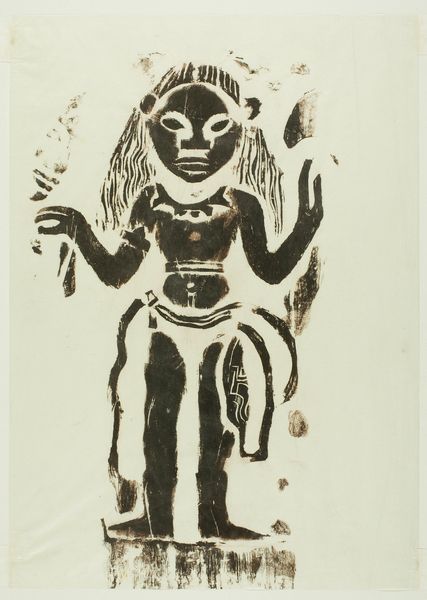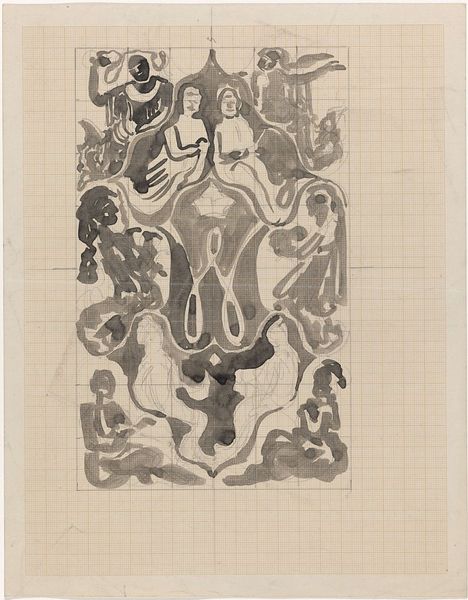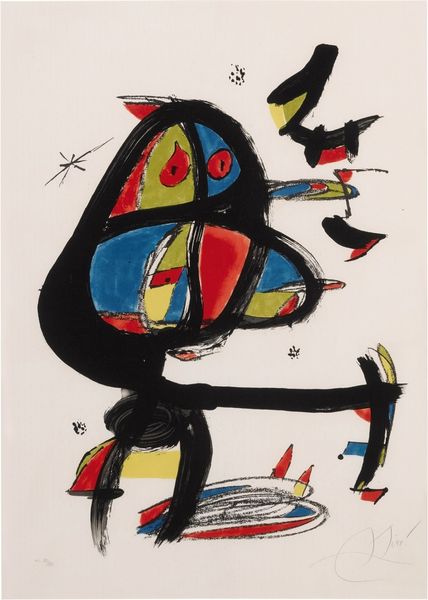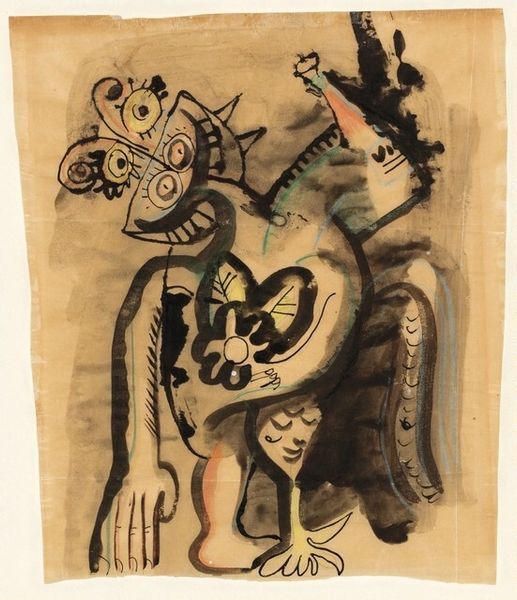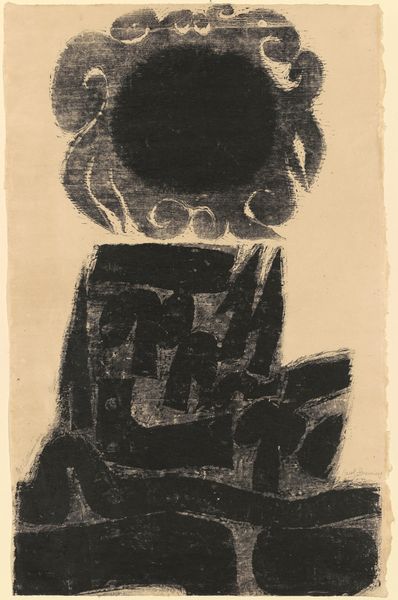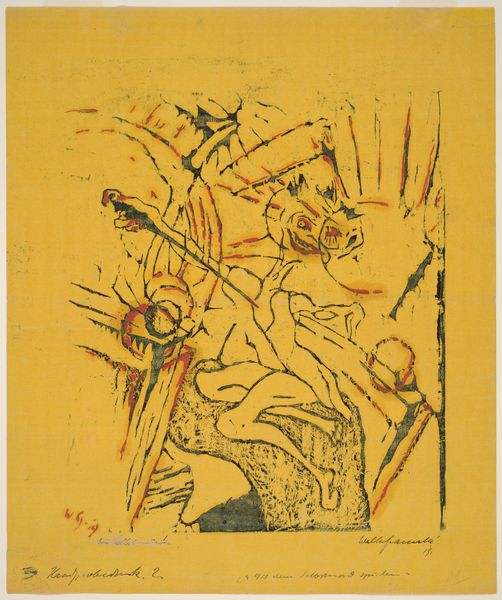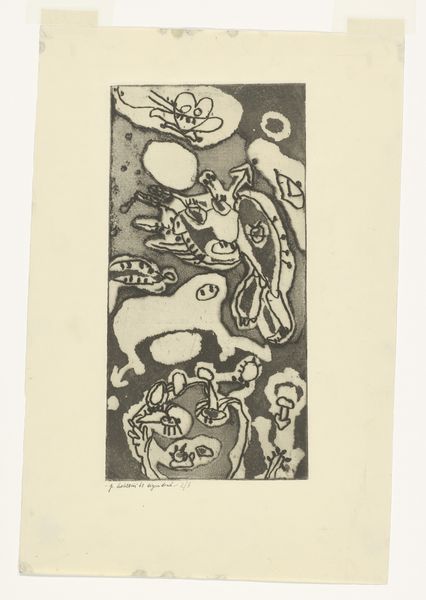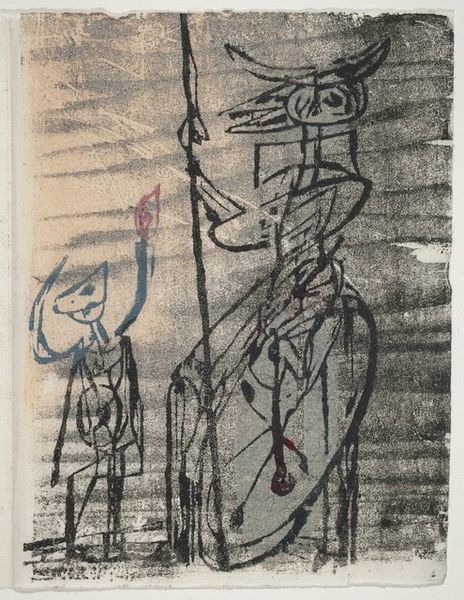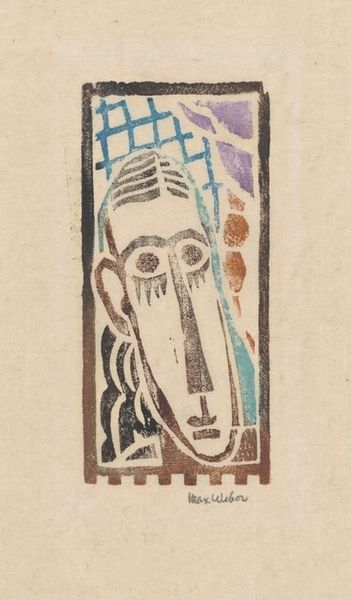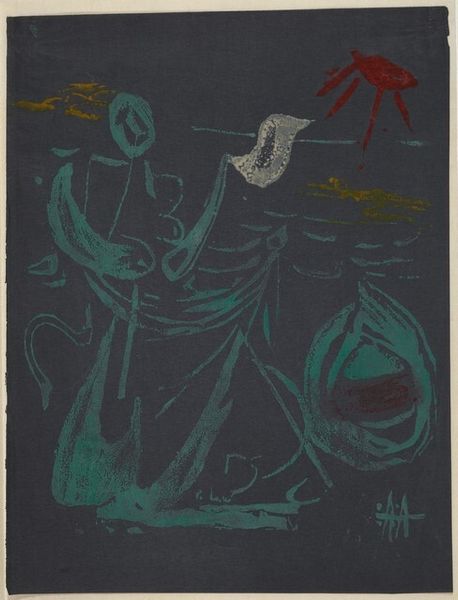
drawing, coloured-pencil, paper, pencil
#
drawing
#
coloured-pencil
#
figuration
#
paper
#
geometric
#
pencil
Dimensions: Overall: 36.9 x 27.9 cm (14 1/2 x 11 in.) overall: 46.9 x 38 cm (18 7/16 x 14 15/16 in.)
Copyright: National Gallery of Art: CC0 1.0
Curator: Looking at this piece, I'm struck by a dreamlike quality. There’s a softness to it, almost like a memory being recalled. What are your initial thoughts? Editor: It definitely possesses a primal visual language. The artwork is a drawing called "Petroglyph" by Lala Eve Rivol, created sometime between 1935 and 1942, using pencil as the medium. Rivol's art explores folk traditions. I'm fascinated by its deliberate simplicity in invoking early forms of cultural expression. Curator: I see that "folk art" come through so strongly in this artwork. Notice the geometric elements surrounding the central figure; do you find any relationship to indigenous imagery or traditions, maybe of the Americas? Editor: Absolutely. Its title itself situates this drawing within a history of indigenous art in the Americas. But also in terms of public presentation; art of this type can be contentious in the space of galleries and museums. Curator: Why do you say that? Editor: The ethics of display, power dynamics, questions about appropriation… presenting an item titled ‘Petroglyph,’ automatically evokes those questions in my mind, considering this drawing likely draws influence from Indigenous visual vocabulary. How might indigenous communities view its public exhibition? Curator: Those considerations certainly provide valuable perspectives on cultural respect, and ownership too. Back to Rivol, it's clear the piece serves as a conduit connecting us to early cultural narratives through potent symbols. The geometric elements feel ancient, almost universal, speaking across time and culture. Editor: Indeed, It serves as a powerful reminder of the complex dialogue between cultures, ethics, and historical representation, underlining the potent, multifaceted function art embodies within the public arena. Curator: Examining "Petroglyph" reveals the potential for images to both preserve and provoke conversation; the artist gives us the task of mediating, not just viewing. Editor: Precisely, and by showing "Petroglyph," museums can engage those complex layers that comprise art’s very cultural and social impact.
Comments
No comments
Be the first to comment and join the conversation on the ultimate creative platform.
